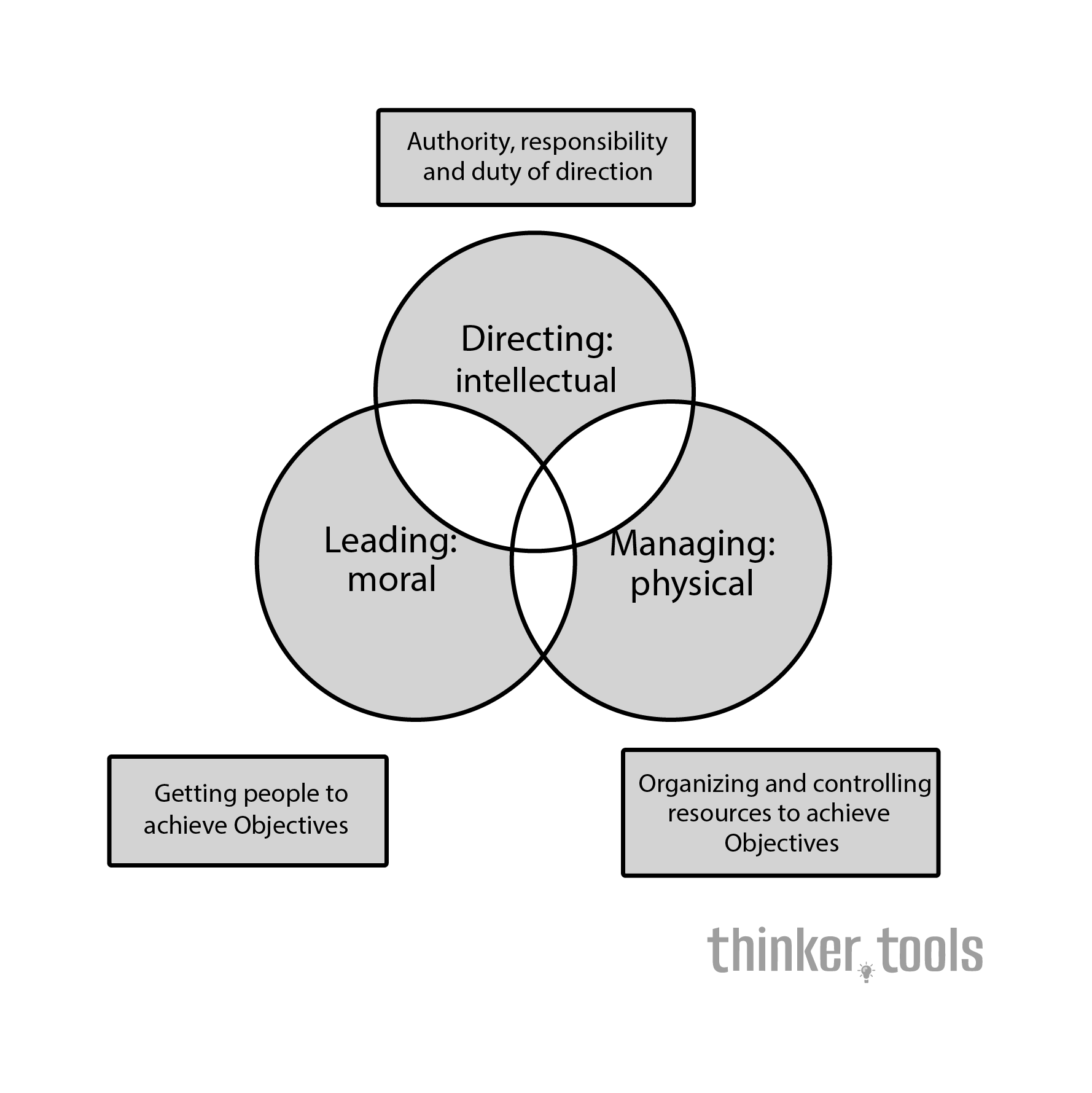
What is the Executive Trinity?
The Executive Trinity is a framework that separates executive responsibilities into three core competencies:
- Directing: Setting the vision and strategic direction
- Leading: Inspiring and influencing people to follow that vision
- Managing: Organizing resources and processes to achieve objectives
While these roles often overlap in practice, understanding their distinctions allows executives to consciously shift between them as situations demand.
The History and Origin
The Executive Trinity concept emerged from decades of organizational research that revealed a common pattern: many executives excelled in one or two areas but struggled to balance all three. This framework was developed by synthesizing insights from management theorists like Peter Drucker, Warren Bennis, and John Kotter, who each emphasized different aspects of executive effectiveness. The trinity model brings these perspectives together into a unified approach.
How to Use the Executive Trinity: Step by Step
Step 1: Assess Your Current Balance
Evaluate your time and energy allocation across the three roles. Most executives naturally gravitate toward one or two areas while neglecting others.
Step 2: Understand Each Role's Core Function
Directing (The Visionary)
- Define the organization's purpose and direction
- Set long-term strategic goals
- Make high-level decisions about resource allocation
- Communicate the "why" behind organizational efforts
Leading (The Inspirator)
- Build trust and credibility with teams
- Motivate and inspire others toward common goals
- Develop organizational culture and values
- Coach and mentor emerging talent
Managing (The Executor)
- Create systems and processes for efficiency
- Monitor performance against objectives
- Solve operational problems
- Ensure resources are used effectively
Step 3: Identify Your Gaps
Honestly assess which role receives the least attention in your current practice. This is often your greatest opportunity for growth.
Step 4: Develop Complementary Skills
Create a development plan that strengthens your weaker areas while maintaining your strengths.
Step 5: Practice Role Switching
Learn to consciously shift between roles as situations require. A crisis might need managing, while a team meeting might call for leading.
Step 6: Build a Balanced Team
Surround yourself with people whose strengths complement your gaps, creating a collective executive trinity.
Practical Examples
Example 1: Launching a New Product Line
Directing: Define the strategic vision for the new product—why it matters to the company's future and what success looks like in 3-5 years.
Leading: Rally the team around this vision, address fears about change, and inspire creativity and innovation throughout the development process.
Managing: Establish project timelines, allocate budgets, create quality checkpoints, and ensure the launch stays on track.
Example 2: Organizational Restructuring
Directing: Determine the new organizational structure that best serves the company's strategic goals and competitive position.
Leading: Guide employees through the emotional journey of change, maintaining morale and engagement during uncertainty.
Managing: Coordinate the logistics of the restructuring—role transitions, reporting changes, and process updates.
Example 3: Crisis Response
Directing: Quickly assess the situation and set clear priorities for the organization's response.
Leading: Maintain calm, communicate transparently, and keep teams focused and motivated despite challenges.
Managing: Implement emergency procedures, reallocate resources, and monitor the situation's evolution.
Benefits and Life Improvements
Enhanced Executive Effectiveness
By consciously developing all three capabilities, executives become more versatile and effective in diverse situations. You're no longer limited by your natural preferences but can adapt to what each moment demands.
Better Organizational Outcomes
Organizations led by executives who master the trinity see improved performance across all metrics—from employee engagement to financial results. The balance creates sustainable success.
Reduced Stress and Burnout
When executives try to excel in one area while neglecting others, stress accumulates. The trinity approach distributes leadership load more evenly, preventing burnout and improving work-life balance.
Improved Team Dynamics
Teams benefit from executives who can seamlessly shift between setting direction, providing inspiration, and ensuring execution. This flexibility creates a more responsive and resilient organization.
Career Advancement
Executives who demonstrate competence across all three areas become invaluable to organizations. This versatility opens doors to higher-level positions and broader opportunities.
Personal Growth and Satisfaction
Mastering the Executive Trinity isn't just about professional success—it's about becoming a more complete leader. The personal satisfaction of knowing you can handle any leadership challenge is immeasurable.
Transform Your Executive Approach
The Executive Trinity isn't about being perfect at everything—it's about understanding the distinct value of directing, leading, and managing, and knowing when to emphasize each. By developing awareness and skill across all three areas, you transform from a one-dimensional executive into a dynamic leader capable of guiding organizations through any challenge. Start by honestly assessing your current balance, then commit to developing your complete executive toolkit. Your organization—and your career—will thank you.